#Quentin Crisp
Explore tagged Tumblr posts
Text

Rita Hayworth symbolically looks toward the future (1941) as she passes writer Quentin Crisp, who ushers out 1940.
138 notes
·
View notes
Text
9 Queer Movies from the 1990s You May Not Have Heard Of
It's New Years, which means it's time for lists. And while everyone else is doing 'top X of 2023,' I've decided to list 9 queer movies from the 1990s. Why? Because I wanna. Plus, in discussions of representation, I often see folks talk about it with a heavy focus on mainstream 'Hollywood' produced movies, which leads folks to talk as though progress has been linear. As if, in the past there was no/'bad' queer representation and now there is 'good' representation. But of course it's not that simple. Plenty of amazing queer movies were produced in the past decades...they were just indie movies and thus difficult to find in a world prior to Netflix and Mubi and whatnot. But now we have streaming services, so allow me to share some of my favorites from the before times (specifically the 1990s).
Without further ado....here is an alphabetical list of queer movies from the 90s you may not have heard of (especially if you're under 30).
--

Beautiful Thing (1996) (dir. Hettie Macdonald)
Before there was Heartstopper, there was Beautiful Thing. It's a story about two gay teens, one sporty and one very much not sporty...and about how they deal with pressure to come out and pressure to hide who they are. It's a very sweet coming of age story, really. However, unlike Heartstopper, in Beautiful Thing the economic class of the protagonists plays an important role in the story (the characters all live on a counsel estate in London). The characters stories are nearly as much about them being working class as it is about the two main character being gay. It's one of the first movies I ever saw about gay teens, and I loved it. I still get a wistful smile every time I hear Mama Cass Elliot's "Make Your Own Kind of Music." (cw for parental abuse)
--

Edward II (1991) (dir. Derek Jarman)
The real Edward II was King of England for 20 years in the 14th century. At the end of the 16th century, Christopher Marlowe wrote a play about Edward's reign and eventual downfall. In 1991, Derek Jarman streamlined Marlowe's play and brought all the homosexual subtext between Edward and Gaveston way out front. In the film, Edward II is in prison and reflects on the events which have led him to that point. The trouble begins when Edward takes the throne and brings his exiled lover, Gaveston, back to England. All around them the rest of the aristocracy (including Edward's wife) conspire to bring Gaveston down. The movie itself is anachronistic (set in 1991), with minimal sets and costume, and staged a lot like a play. A lot of the dialogue is right out of Marlowe's play, though there are some changes to the story (notably at the end). It's honestly my favorite Derek Jarman movie, and frankly one of my favorite movies, full stop. (cw for blood, animal corpses, violent death)
--
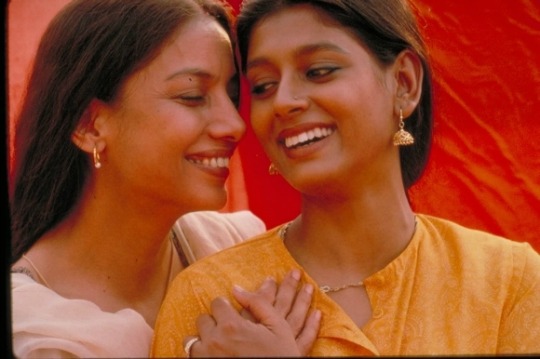
Fire (1996) (dir. Deepa Mehta)
Fire is the first film in the Elements Trilogy written and directed by Deepa Mehta. Each film in the trilogy is about different characters in India, with the connection between the three being thematic rather than plot or character. Fire is about two Indian women, Radha and Sita, who form a bond through their struggles living within a traditional "joint-family" (i.e. a family where all extended family live together and all money and resources are shared). The women in this family have very little agency and this film explores how the two main characters navigate through it. The men in this film are also repressed by the social structure in which they live, and this film spends some time looking at that as well. It's a film about queer desire between women living under patriarchy. (All the movies on this list are available on streaming services in the US, except Fire. However, I was able to find it uploaded to a random YouTube channel) (cw for someone catching on fire, brief domestic violence (a slap), and non-consensual kissing)
--
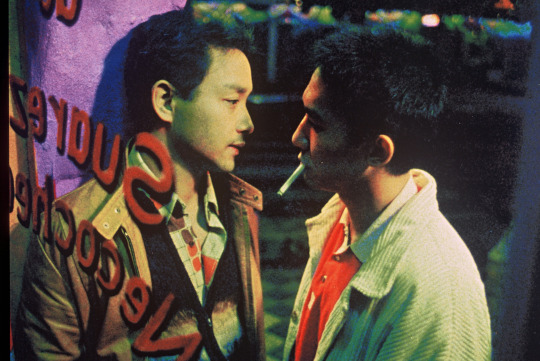
Happy Together (1997) (dir. Wong Kar-wai)
In Happy Together, two men from Hong Kong travel to Argentina and eventually get stuck there when they run out of money and are unable to return home. The relationship between these two men is very tumultuous, with a lot of arguing and breaking up and getting back together. It's one of the first movies I saw in which queer folks have, just, regular ol' relationship drama - exasperated by the regular ol' struggles of life. (i cant remember if there are any content warnings i should put here; it's been a few years since i've seen it)
--
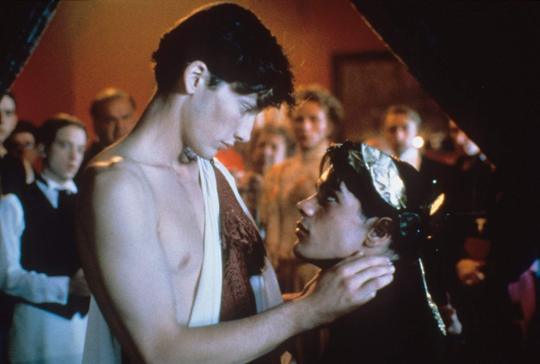
Lilies (1996) (dir. John Greyson)
Lilies is a Canadian film in which a prisoner requests a bishop come to the prison to hear the prisoner's last confession. It quickly becomes clear, however, that the prisoners have something else in mind when they begin staging a play. It turns out the bishop and prisoner knew each other as teens, and the play is about the events in their lives that led up to the prisoner being put on trial. So you end up with a play-within-a-play (or rather a play-within-a-movie). The film weaves between the production staged in the prison and the memory of the events in a really fluid way. All the prisoners portray their characters in the 'memory' sections, which lends itself to some really great moments in the prison sections. And at the heart of this memory/story is a queer love story. (cw for parental abuse, murder, fire, and suicide)
--

The Living End (1992) (dir. Gregg Araki)
This is a film about two young gay men who are diagnosed HIV positive. Unlike more mainstream films about HIV that came before (and after), The Living End wears its anger and pain on its sleeve. The entire world is entirely fucked up, and so these two men turn to a nihilistic outlook. The acting is just okay and some of the dialog is a bit ridiculous...but what draws me to rewatch this movie is the way that it conveys the emotion of the time. It's a ball of rage manifest on film. (cw for attempted suicide, rape, murder)
--
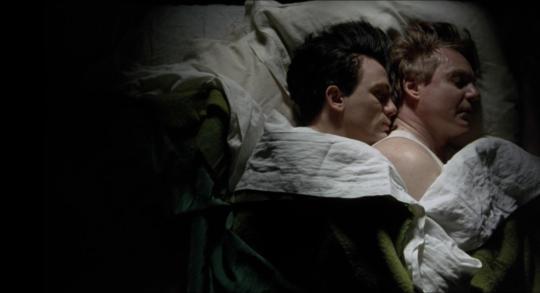
Love is the Devil (1998) (dir. John Maybury)
One of the problems with the average biopic is that it attempts to portray a person's entire life in a single movie. Thankfully, Love is the Devil doesn't have that problem; it focuses on only 8 years of Francis Bacon's life - the time he spent with a man named George Dyer. By this point, Bacon was already an extremely famous artist (and, at least in the film, a bit of an asshole). Bacon meets Dyer as Dyer attempts to burgle Bacon's studio - and thus begins an extremely dysfunctional love affair. If you want to see Derek Jacobi and Daniel Craig portray this dysfunctional relationship, then this is the movie for you. Also, if you want to see a biopic that lets the subject of the film be portrayed as a shitty person, this is a film for you. (cw for bdsm, drug use, untreated mental illness, and suicide)
--

Orlando (1992) (dir. Sally Potter)
From right out the gate, Orlando announces its queer themes by having Quentin Crisp portray Queen Elizabeth I, and Tilda Swinton portray Orlando (a man). From the first scenes it becomes clear that gender is going to be a main theme in the movie. Orlando is a young man who will never grow old and never die. He begins life in the 1500s, during Queen Elizabeth's reign, and we see him (and later, her) throughout the centuries between then and 'present' day (1992). The film is broken into thematic chunks (poetry, politics, society, etc). In each of these chunks we see Orlando's life as it reflects the social norms of the time (especially gender norms).
--
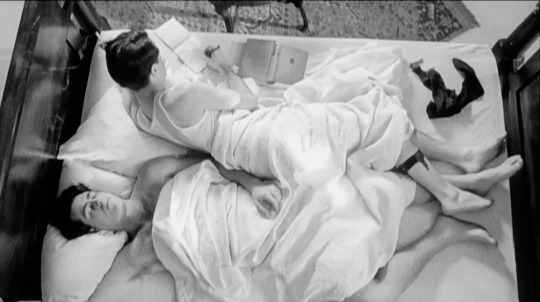
Swoon (1992) (dir. Tom Kalin)
Like Rope (1948) and Compulsion (1959), Swoon is a film about the Leopold and Loeb murder. Unlike the earlier films, Swoon makes the gay relationship between Leopold and Loeb explicit. Their relationship in the film is fairly uneven, with Loeb being characterized as more of an explicit manipulator. Leopold, on the other hand, is driven more by wanting to please Leob. Complicating this dynamic is the way that Leopold is the one more interested in their sexual relationship. Is Loeb exchanging sex for help with his criminal activities? Or is Leopold committing crimes in order to elicit sex from Loeb? Or both...something a bit more complicated than either/or? The film, especially the latter half, eschews and lampoons the sensationalism of the reporting of the crime from the time. (cw for murder, blood (in black and white), and animal corpses)
--
Honorable mention goes to more well-known movies I didn't put on this list, such as: But I'm a Cheerleader, Velvet Goldmine, Bound, Adventures of Priscilla Queen of the Desert, The Birdcage, To Wong Foo, Thanks for Everything! Julie Newmar, My Own Private Idaho, Bent...there are actually a whole lot of queer movies from the 1990s, now that I think about it.
#beautiful thing#hettie macdonald#edward ii#derek jarman#fire#deepa mehta#happy together#wong kar wai#lilies#john greyson#the living end#gregg araki#love is the devil#john maybury#orlando#sally potter#swoon#tom kalin#virginia wolf#leopold and loeb#tilda swinton#quentin crisp#derek jacobi#daniel craig#francis bacon#lgbt movies#queer movies#lgbt representation#queer representation#1990s movies
282 notes
·
View notes
Text

Quentin Crisp, December 25, 1908 – November 21, 1999.
1982 photo by Peter Hujar.
40 notes
·
View notes
Text




Sandy Powell: 'Orlando! Dressing The Part' @scadfash curated by @raf_gom.
2 November 2024

Sandy Powell's Dressing the Part: Costume Design for Film is curated by Rafael Gomes, creative director of SCAD FASH museums in Atlanta, USA. Open now until March 26, 2025.
#elizabeth i#quentin crisp#as elizabeth#sandy powell#costume design#film costume#orlando#1990s#1992#vita sackville west#sally potter#16th century#elizabeth tudor#film#film history#as elizabeth i#rafael gomes#fashion museum#fashion exhibition#period drama
50 notes
·
View notes
Text

Quentin Crisp by Greg Gorman 1994
142 notes
·
View notes
Text

Jennifer Beals in The Bride (1985)
#the bride#1985#franc roddam#mary shelley#sting#jennifer beals#anthony higgins#clancy brown#david rappaport#geraldine page#quentin crisp
10 notes
·
View notes
Text

Quentin Crisp (1941) by Angus McBean
#gay#gay art#gay artist#gay history#gay photography#black and white photography#quentin crisp#angus mcbean
97 notes
·
View notes
Text

Quentin Crisp by Francesco Scavullo, 1979
27 notes
·
View notes
Text

Tilda Swinton & Quentin Crisp in Orlando (1992)
31 notes
·
View notes
Text
youtube
the 1990 peter tork quentin crisp beyond vaudeville live show has been released
#choosing to believe that my incessant commenting played a part in getting this posted lmao#peter tork#quentin crisp#the monkees#beyond vaudeville#video#Youtube
48 notes
·
View notes
Text

Quentin Crisp, Photo by Len Prince, 1995
71 notes
·
View notes
Text

Quentin Crisp, December 25, 1908 – November 21, 1999.
With Allen Ginsberg in 1994.
105 notes
·
View notes
Note
Quentin Crisp

6 notes
·
View notes
Text
‘The irony of accusing [Quentin] Crisp and [Luca] Guadagnino of homophobia is that their take on all matters queer are more faithful to the true nature of homosexuality than that of their gay activist critics. They understand that homosexuality is markedly distinct from heterosexuality. Love is incontrovertibly not love. When a male pursues a partner of his own sex, he is venturing into the realm of the unattainable, which will either end in the discovery of higher mysteries or in tragedy and his demise. Guadagnino’s decision to cast heterosexual actors to play gay roles projects Crisp’s impossible fantasy onto the screen—a feat much more interesting than promoting “queer visibility.”’
— Stephen G. Adubato: “The Impossible Object of Queer Desire”
3 notes
·
View notes
Text

QUENTIN CRISP (1999) FROM 'OUT OF MIND' BY SHAWN MORTENSEN (PUBLISHED 2007)
8 notes
·
View notes
Text







Queen Elizabeth's gown as worn by Quentin Crisp for 1992's Orlando, directed by Sally Potter. The film's costumes were designed by Sandy Powell.
Images of the preserved costume and details are from the Film Costume Collection.
26 notes
·
View notes